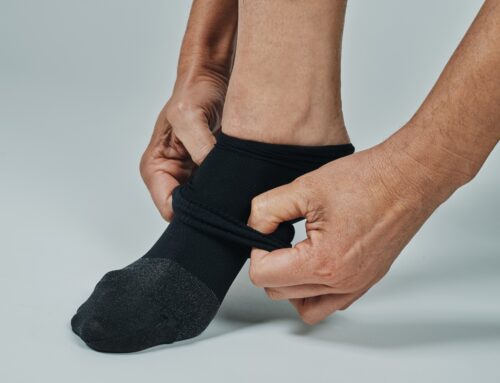Circulatory health is a cornerstone of overall wellness, playing a pivotal role in ensuring that every part of the body receives the essential nutrients and oxygen needed for optimal functioning. The circulatory system, comprising the heart, blood vessels, and blood, serves as the vital transport network for our bodies. Maintaining its health is crucial for preventing a range of disorders, from hypertension and varicose veins to more serious conditions like heart disease and stroke.
Recent advancements in textile technology have opened new avenues for supporting circulatory health. Innovatively designed fabrics can now help in enhancing blood flow, regulating body temperature, and even offering therapeutic compression, all of which contribute to better circulatory function.
Understanding Circulatory Health
Circulatory health refers to the functionality and well-being of the body’s circulatory system, which includes the heart, blood, and blood vessels. This system plays a crucial role in delivering oxygen, nutrients, and hormones to various parts of the body, while also carrying away waste products.
Good circulatory health is vital for maintaining overall physical health, enabling organs to function properly, and ensuring that the body’s cells are nourished and detoxified effectively.
Importance of Good Circulatory Health
- Optimal Organ Function: A healthy circulatory system ensures that all organs get the oxygen and nutrients they need.
- Prevention of Diseases: Good circulatory health reduces the risk of cardiovascular diseases, strokes, and hypertension.
- Energy and Vitality: Efficient circulation aids in maintaining high energy levels and overall vitality.
Common Circulatory Disorders
Some common circulatory disorders include:
- Hypertension (High Blood Pressure): A condition where the force of the blood against artery walls is too high.
- Arteriosclerosis/Atherosclerosis: Hardening or narrowing of the arteries due to plaque build-up.
- Varicose Veins: Enlarged, swollen, and twisting veins, often appearing blue or dark purple.
- Deep Vein Thrombosis (DVT): Formation of a blood clot in a deep vein, typically in the legs.
These disorders can have significant impacts on overall health, ranging from increased risk of heart attacks and strokes to chronic pain and mobility issues.
Factors Affecting Circulatory Health
The following lifestyle choices greatly influence circulatory health:
- Diet: High-fat, high-sodium diets can lead to artery blockage and hypertension.
- Exercise: Regular physical activity improves heart health and blood circulation.
- Smoking and Alcohol: Smoking and excessive alcohol consumption can damage blood vessels and heart function.
- Stress: Chronic stress can lead to high blood pressure and other heart-related issues.
What we wear can also affect circulatory health:
- Tight Clothing: Excessively tight clothing can restrict blood flow, leading to circulation issues.
- Fabric Choice: Non-breathable fabrics can cause overheating, affecting blood vessel dilation.
- Compression Garments: Specially designed fabrics can aid circulation, offering support and reducing the risk of circulatory disorders.
Understanding these factors is crucial in maintaining circulatory health and preventing related disorders. By making informed lifestyle and clothing choices, individuals can significantly contribute to the health of their circulatory system.
Evolution of Fabric Engineering for Health
The journey of fabric engineering, particularly for health purposes, is a fascinating tale of innovation and discovery. Historically, the use of specific fabrics for health benefits can be traced back to ancient civilizations.
For instance, the Egyptians used linen for its cooling and antibacterial properties, while silk was prized in China for its luxurious feel and hypoallergenic qualities.
From Past to Present
In the past, the focus was more on the natural properties of fabrics. However, with the advent of modern science and technology, the approach to fabric engineering has become more sophisticated and purpose-driven.
Modern Advancements
Recent advancements in fabric technology, especially for circulatory health, have been groundbreaking. The development of smart fabrics that can interact with the body’s physiology has opened new doors for health and wellness. These include:
- Compression Fabrics: Designed to apply gentle pressure to the body, enhancing blood flow and reducing the risk of circulatory disorders.
- Thermoregulating Fabrics: Materials that adapt to body temperature and environmental changes, ensuring optimal blood flow under various conditions.
- Moisture-Wicking Fabrics: These help in maintaining optimal skin temperature and reduce the risk of skin irritations that could affect circulation.
Innovative Fabrics and Circulatory Health
Modern fabrics are engineered with specific health goals in mind. For enhancing circulatory health, fabrics are designed to:
- Improve Blood Flow: Compression fabrics apply pressure to certain body parts, aiding in venous return and reducing the risk of blood clots.
- Regulate Temperature: Keeping the body at an optimal temperature is crucial for good circulation. Thermoregulating fabrics help maintain this balance.
- Reduce Swelling: Certain fabrics can help reduce swelling in limbs, a common issue in circulatory disorders.
Some notable examples of fabric technologies include:
- Graduated Compression Wear: These garments are tighter at the extremities and gradually decrease in pressure towards the top, improving blood flow back to the heart.
- Infrared Fabrics: Some modern fabrics incorporate materials that reflect the body’s infrared rays, enhancing blood circulation and tissue oxygenation.
- Antimicrobial and Hypoallergenic Fabrics: These reduce the risk of skin infections and allergies, which can indirectly impact circulatory health.
These innovative fabric technologies not only offer direct benefits for circulatory health but also contribute to overall comfort and well-being, marking a significant leap in the integration of textile science and health care.
Choosing the Right Clothing for Circulatory Wellness
Selecting clothing that supports circulatory health is an essential aspect of overall wellness, especially for those with circulatory concerns or at risk for such conditions.
Guidelines for Selecting Circulatory-Friendly Clothing
- Opt for Proper Fit: Clothes should be snug but not too tight, as overly tight clothing can restrict blood flow, especially around the waist, legs, and groin area.
- Choose Breathable Fabrics: Fabrics that allow air circulation help maintain body temperature, which is vital for healthy circulation.
- Consider Compression Garments: These are specifically designed to support blood flow and can be particularly beneficial for those with or at risk of circulatory disorders.
- Look for Functional Design: Garments with functional design, such as padded footbeds in socks or seamless construction, can promote comfort and circulation.
Role of Compression Garments
Compression garments play a significant role in circulatory health. They are designed to apply gentle pressure to the limbs, enhancing blood flow and reducing the risk of clots. Benefits include:
- Improving Venous Return: Helps in efficient blood flow back to the heart, especially important for people who stand or sit for long periods.
- Reducing Swelling: Compression wear can prevent or minimize swelling in the legs and feet.
- Preventing Varicose Veins: Regular use of compression garments can help prevent the development or worsening of varicose veins.
Choosing the right clothing for circulatory wellness can significantly impact your overall health and comfort.
Integrating Fabric Innovations into Daily Life
Adopting fabric innovations designed to boost circulatory health doesn’t mean compromising on style or comfort. Integrating these advancements into your daily wardrobe can be seamless and beneficial. Here are some practical tips to help you incorporate circulatory-friendly clothing into your daily routines, striking a balance between fashion, comfort, and health.
Practical Tips for Incorporation
- Start with the Basics: Begin by replacing basic items like socks and underwear with versions that offer circulatory benefits, such as compression socks or moisture-wicking undergarments.
- Gradual Transition: Slowly introduce circulatory-friendly clothing into your wardrobe. You don’t have to overhaul your closet overnight. Start with a few key pieces and gradually expand.
- Mix and Match: Pair circulatory-friendly clothing with your regular wardrobe. For instance, compression leggings can be worn under a stylish dress or skirt.
- Workplace Integration: Consider circulatory-friendly options for work attire, like supportive footwear or compression sleeves that can be worn under a shirt.
- Athletic Wear: For those who exercise, choosing activewear with circulatory benefits can enhance workout effectiveness and recovery.
Balancing Fashion, Comfort, and Health
- Style with Comfort: Look for brands that offer a blend of fashion and functionality. Many modern circulatory-friendly garments are designed to be aesthetically pleasing as well as beneficial.
- Quality over Quantity: Invest in high-quality pieces that will last longer and maintain their circulatory benefits even after multiple washes.
- Personal Style Adaptation: Choose circulatory-friendly clothing that aligns with your personal style. There’s a wide range of options available, from classic to trendy.
- Comfort as Priority: Always prioritize comfort, especially if you have specific circulatory issues. Comfortable clothing that supports circulatory health can lead to better overall well-being.
Weaving Health into Every Thread
The innovative integration of technology into textiles has opened a pathway to improved wellness, offering practical solutions to those seeking to enhance their circulatory health. These advancements are not just a triumph of science but also a testament to the evolving understanding of the intricate relationship between what we wear and how we feel.
By incorporating circulatory-friendly clothing into your daily life, you’re not just choosing comfort and style; you’re making a conscious decision towards better health outcomes. At Care-Med, we are at the forefront of bringing these innovative fabric technologies to you. Our range of products is carefully curated to ensure that you benefit from the latest advancements in fabric engineering for circulatory health.
Schedule your consultation with Care-Med today and take a step towards weaving health into every aspect of your life, one thread at a time.
Share This Story, Choose Your Platform!
Table of Contents
We specialize in orthotics, body braces, and compression wear tailored to your unique needs in Toronto. Reach out to us at info@caremed.care or call 416-782-5353 to book your fitting and consultation.
Experience the difference of customized solutions designed just for you.











